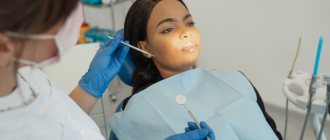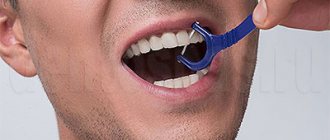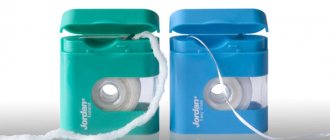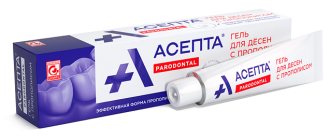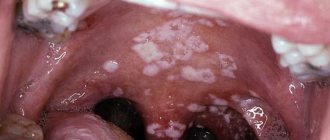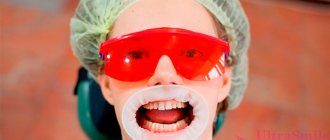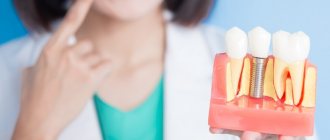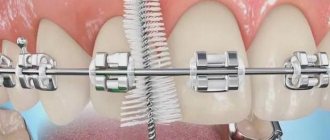Dentistry Apex-D / Memo for the patient / Recommendations after brushing your teeth
Recommendations after professional oral hygiene are a set of healing procedures for long-term preservation of the effect; subject to the recommended time interval between visits to the doctor, professional hygiene does not have any potential harmful effects on the tissues of the teeth and gums.
General rules for dental care after ultrasonic cleaning
By resorting to the rules developed by dentists, it is easy to achieve a long-lasting effect after cleaning the dental plate. These include:
- To prevent the deposition of stones and plaque on teeth, visit a doctor every 6 months.
- The doctor, after examining the oral cavity, will give an opinion on the possibility or impossibility of a procedure using laser beams.
- When a pathological process is identified, the doctor first eliminates it: caries or something else.
- After laser cleaning, 2-3 weeks should pass. Products that affect the color of the enamel are excluded from the diet during the recovery period.
- Whitened fangs, molars and incisors are also susceptible to mechanical stress. In this regard, nuts, seeds and even chips are removed from the diet for 7-20 days.
By applying the rules in practice, it is easy to avoid damage to the tooth plate and gums that have not had time to recover.
Stages of the procedure
Ultrasonic cleaning is a serious medical procedure and is therefore performed according to an approved protocol. First, the doctor visually examines the patient, determining the degree of contamination of the enamel layer. Then - a mandatory medical history. This allows the doctor to identify possible contraindications. If the patient has hypersensitive enamel, then local anesthesia is given. After this, the cleansing itself begins. The power and other settings of the device are selected by the dentist based on the specific clinical case. The next stage is grinding the ultrasonic-treated teeth using a drill and a special attachment, or manually. In conclusion, the doctor recommends covering the enamel with fluoride varnish to strengthen it and reduce sensitivity.
Note: experts recommend that after ultrasonic removal of tartar, you undergo a professional Air Flow cleaning procedure. This will not only allow you to ideally remove remaining soft deposits, but also make your teeth visually lighter by 1 – 2 shades.
Allowed products after the procedure
In addition to your favorite treats and drinks that require exclusion for up to 3 weeks, there are healthy foods:
- The meat is fatty and dietary. Steamed cutlets, goulash, and stewed cabbage rolls are suitable.
- Garnish with mashed potatoes, rice, oatmeal, pasta.
- Soups and meat broths of different consistencies.
- From fermented milk products: sour cream, yogurt without dyes, non-sour cottage cheese, milk.
- Fruits that do not leave a tint, vegetables without acid - zucchini, white cabbage and beans, potatoes.
- Still drinks, diluted juice.
- Bread of any kind, without a hard crust.
- Soft confectionery products: pastries, cakes, marmalade, marshmallows.
- Eggs are allowed in any type of preparation.
Monitor the temperature of the prepared foods; they must be warm when eaten.
Recommendations for what you can eat after professional teeth cleaning at the dentist
The procedure is safe and does not lead to negative consequences. However, hard and soft tissues are still injured to varying degrees. During the first few weeks, the enamel and gums are especially sensitive and require special care. Despite the fact that ultrasound is considered the most advanced and effective method, complications may arise in the form of inflammation and increased susceptibility to external influences.
Pro Tips:
- if the pain does not go away for a long time, painkillers do not help, then you need to urgently visit the dental clinic;
- To relieve the inflammatory process, pharmaceutical gels and ointments are used;
- it is important to monitor the nutrition and temperature of food and drinks;
- It's worth buying a suitable brush and paste.
Prohibited products after cleaning the stone
Products with dyes, sour and hard products are strictly excluded. Professional hygiene requires limiting the following range of products:
- black tea and coffee, hot chocolate and cocoa, fruit juice, compote and carbonated drinks;
- sour first courses (tomato soup and borscht, beetroot soup);
- buckwheat;
- black bread;
- fruits with bright juice, these include: currants, strawberries, mulberries, raspberries, pomegranates, cherries;
- sour citrus fruits;
- sauces, vinegar and mustard are added to them;
- dark chocolate, jam, colored sweets.
Acidic, sticky and viscous substances prevent the enamel and gums from recovering after hygiene procedures during the prescribed period.
We keep it clean!
Both after whitening and after professional hygienic teeth cleaning with ultrasound, tooth sensitivity increases, although in the case of ultrasound cleaning, unpleasant painful sensations do not occur as often and are not as pronounced. Therefore, in order to protect yourself from possible discomfort, you need to reconsider your usual diet and temporarily exclude hot, cold, sour, salty, and sweet dishes from the menu.
In addition, for the first week after removing soft dental deposits and removing tartar, you should stop smoking and consuming any foods and drinks that have coloring properties. The list of foods that should be excluded from the diet includes berries (blackberries, blueberries, black grapes and currants), vegetables (carrots, beets, tomatoes, pumpkin, red cabbage, etc.), drinks (black tea, coffee, chocolate , cocoa, lemonades and carbonated sweet drinks), juices with the addition of natural and artificial colors.
The specialists of our dental clinic recommend that all patients, after professional teeth cleaning, be sure to adhere to the rules of thorough oral hygiene - if possible, brush your teeth after every meal or use special hygiene devices (toothpicks, floss, etc.).
Beverage requirements
Do not be upset if the doctor tells you to prohibit certain drinks. Remove from those previously used with a coloring pigment and a high acid concentration.
What about tea?
Black tea is definitely not allowed, it provokes dark plaque on healthy teeth. What can we say about recently processed ones that require gentle treatment. Green tea, despite its many beneficial properties, is also not allowed - tannins leave a yellowish tint on the enamel surface.
Should I drink coffee?
In the first week, you need to come to terms with the state of things and give up coffee. The yellow pigment produced by caffeine will immediately be deposited on the teeth. Next, if patience has run out, drink a weak coffee drink, no more than once a day. But it is still better to endure a period of rehabilitation of the surface of the enamel and periodontal tissue.
Alcoholic drinks
Dentists do not express categorical prohibitions against strong drinks without dyes. But any of them cannot be drunk from the refrigerator - the enamel cannot withstand such a load and will crack. Beware of wines, they contain different types of dyes.
Tobacco products
In addition to the fact that smoking is harmful to health, tobacco also has a negative effect on your teeth. Resins cling to the top surface of the plates, forming a yellow coating. Bone tissue is gradually destroyed due to a decrease in beneficial bacteria. In other words, the microflora of the oral cavity noticeably deteriorates.
Which products are safe
Dentists recommend consuming foods that are not only safe, but also healthy for your teeth. It is advisable to include foods containing minerals (calcium and fluorine) as well as vitamins (A, EC) into your daily diet. Quick fastening of the enamel will allow you to quickly return to your usual diet and favorite dishes.
Experts determine the main list of foods that can be eaten after teeth whitening at the dentist:
- any dairy products that do not contain dyes or coloring fillers;
- fruits and vegetables of dull colors;
- natural seafood;
- poultry and egg whites;
- pasta, cereals and potatoes;
- any cabbage, with the exception of red cabbage;
- bakery products;
- celery or asparagus (steamed).
When following a white diet after teeth whitening, the list of acceptable foods includes all those foods that do not have a coloring effect.
It is recommended to adhere to these particular products in order to avoid not only staining, but also damage to the enamel. Weakened enamel can react to sour, salty and spicy foods, which will “eat away” the unprotected enamel, thus provoking the development of infectious or inflammatory processes. It is also not advisable to consume rough food to prevent damage to the surface of the teeth.
Causes of bad breath - even brushing your teeth does not give noticeable freshness
An unpleasant odor from the oral cavity involuntarily creates discomfort during communication. This is facilitated by:
- Interdental deposits.
- Unskilled treatment of the space under the gums by insufficiently experienced dentists.
- Poorly cleaned dental plates or faster than necessary for hygiene requirements. Then plaque gets clogged in the gum pockets, which threatens periodontal disease and further tooth decay.
- It is in vain that some patients expect that laser removal of stones will permanently eliminate dental problems. This is a misconception - you need to take care of your teeth and the interdental space with the same zeal.
- When going to work, school, or guests, refrain from spicy foods - fish, onions, garlic.
- Bad breath occurs due to diseases of the gastrointestinal tract, kidneys and liver.
- Promotes the proliferation of harmful microbes, not least tonsillitis, sinusitis, and diabetes.
- Taking certain medications can contribute to bad breath.
If the odor persists after professional treatment of the dental surface, contact your dentist for advice. The tooth may need to be removed and a new one installed.
Why do you need a diet?
The teeth whitening procedure involves influencing the natural or acquired shade of enamel with a special device or means for “evaporating” the dark pigment.
Subsequently, the protective layer of enamel becomes thinner. It takes about 10–14 days for it to fully recover. If the still fragile tooth enamel can be affected by dyes, then there is a high probability of staining the surface of the teeth. To prevent this result, dentists have developed a special white diet that excludes a number of “colored” foods from the diet.
Before the procedure or after its completion, the dentist gives the patient the necessary recommendations about acceptable and prohibited products after teeth whitening. Neglecting the recommendations can cause not only darkening of the enamel, but also the development of caries.
Pros and cons of ultrasonic tartar removal
Unlike other methods, ultrasonic cleaning has a number of advantages:
- Removes subgingival calculus that is difficult to reach with traditional instruments. To clean the root zone, the doctor pulls back the gums and works with the neck and root of the tooth.
- Cleans the interdental spaces even of very dense teeth, uneven, overlapping one another.
- The procedure does not last long - 40-60 minutes.
- Painless. The patient does not feel any impact.
- Non-contact influence. Only air and water come into contact with teeth. With the outdated mechanical method, the instruments scratch the enamel and cause an unpleasant “grinding” sensation.
Contraindications
The most important contraindication is the presence of a pacemaker in the patient. Ultrasonic waves can disrupt its operation.
Other restrictions also apply to health conditions:
- asthma, bronchospasm, tuberculosis,
- increased risk of bleeding,
- allergies to the drugs used,
- infectious and viral diseases,
- oncology,
- mental illness, epilepsy.
Attention: Relative contraindications are pregnancy (first trimester), childhood (up to 16-18 years). The decision to perform the procedure is made by the dentist.
Clinical researches
An analysis of the clinical effectiveness of the use of various therapeutic and prophylactic agents of the Asepta series, carried out in Novosibirsk, at the State Budgetary Educational Institution of Higher Professional Education "Novosibirsk State University", confirmed that the line is different:
- Pronounced hygienic;
- Anti-inflammatory;
- Hemostatic property.
The study examined the effect of the products on the oral health of adolescents, patients with the most sensitive tissues and with pain in wisdom teeth. The use of pastes, balm with propolis and rinse demonstrated an improvement in clinical indicators and confirmed high efficiency in the treatment of periodontal pathology in patients of different ages.
Is it possible to do ultrasonic cleaning at home?
Unfortunately, it is impossible to install a scaler at home and do ultrasonic cleaning of your teeth yourself. This should be done by a specialist. But there is an alternative option - buy an ultrasonic toothbrush. It has a special mechanism and a conductor inside the handle that produce vibrations. This is the so-called “soft ultrasound”, which destroys pathogenic microflora. This device removes plaque 200% more effectively than a regular toothbrush. It’s just that it’s unlikely to be able to cope with massive tartar that has accumulated on your teeth for years. Therefore, it is still recommended to consult a dentist before purchasing.
Advantages
Cleansing efficiency.
The ultrasonic system removes tartar with the greatest possible effect without consequences for dental health. In addition, unlike other cleansing methods, ultrasound easily breaks down hard deposits even under the gum. No risk to enamel. Hard stone is difficult to remove mechanically, and it is almost impossible to remove plaque with chemicals without affecting the enamel. Ultrasonic cleaning has no such disadvantages. The system is designed in such a way that it does not directly affect the tooth surface, which significantly reduces the risk of damage.
Whitening effect. After cleaning, many patients who were planning to schedule an appointment for whitening abandon this idea because the teeth become several shades lighter. However, the color of the enamel remains natural, since special bleaching is not performed during the procedure.
Fast and painless. The procedure is painless, does not require special preparation and does not take much time. If the patient has a lot of deposits in the gum line area, the dentist will suggest using topical or local anesthesia with the minimum possible dosage of anesthetic.
Prevention of diseases. As a rule, deposits on teeth can provoke many dental diseases, such as caries, gingivitis or periodontitis. After removing hard deposits and soft plaque, the dentist will be able to correctly assess the condition of the tooth enamel, notice their pathological changes in time and, if necessary, carry out urgent treatment. In addition, ultrasound kills bacteria by delivering an antiseptic solution and the bactericidal effect of cavitation.
Ultrasonic cleaning at the TopSmile clinic
Get an individual consultation with a specialist at the TopSmile clinic
Get acquainted with the service
Main stages of ultrasonic processing
The dentist conducts an examination, identifies places where tartar accumulates, the amount, and determines its density in order to choose the appropriate cleaning regimen. Sometimes teeth are treated with a special solution that reveals the boundaries of plaque. If the patient has sensitive teeth, gums or deep subgingival calculus, anesthesia (injection or application) is performed.
Stone removal is carried out in three stages:
Brushing teeth with a skyler
Skyler is a dental instrument that generates ultrasonic air vibrations. Water (an antiseptic solution) mixed with air is sprayed through a narrow nozzle. The liquid is intended to cool the tooth and wash away the separated plaque.
The ultrasonic wave forms cavities in mineralized deposits, the plaque cracks and peels off from the enamel. The fragments are removed with a saliva ejector.
First, the doctor cleans the crowns, then the subgingival area, guiding the scaler with parallel vertical movements.
Brushing teeth with a skyler
Polishing
Cleaned teeth have a rough surface. To slow down the adhesion of food and bacteria, polishing is used.
Main types:
- Mechanical with special paste and a round elastic brush. The interdental spaces are polished with thin strips or narrow spiral-shaped brushes.
- Hardware using the AirFlow method - using a powerful jet of water with an abrasive containing sodium bicarbonate.
Brushing your teeth with a special paste and a round brush
Fluoridation
Fluoridation helps strengthen enamel and reduce hyperesthesia (sensitivity) in the cervical area.
- The tooth surface is dried with a stream of warm air for better adhesion.
- Apply a composition containing fluoride ions (gel or varnish) and dry again.
- The teeth are treated with a swab soaked in copper hydroxide and calcium solution. The substances enter into a chemical reaction, and calcium fluoride crystals are formed in the dentinal tubules and other irregularities, which strengthen the tooth tissue and prevent infection.
What is tartar and what are the causes of its appearance?
Tartar is hardened plaque that forms on the visible part of the tooth (crown) and under the gum.
The reasons for its appearance are natural, but the consequences can cause pathologies in the oral cavity.
Initially, food particles stick to the enamel. Bacteria begin to actively multiply in them. A dental plaque is formed, which looks like a soft, light plaque. Plaque can be easily removed by regular tooth brushing. But if this does not happen, then food debris, dead cells of the mucous membrane, calcium and phosphorus salts from saliva are layered on the soft plaque. They crystallize and harden.
Mineralization occurs on average within 12 days. Soft plaque turns into hard plaque. Tartar has a rough surface, onto which more and more elements “cling.”
Attention: A bacterial film on teeth forms within 16 hours. Therefore, it is important to brush your teeth at least twice a day.
Photo of plaque, male jaw
Why hard deposits form
Plaque formation is inevitable, but there are a number of factors that accelerate the process:
- Irregular hygiene. Particularly active formation of plaque and stone occurs at night: salivation decreases, a person swallows less often, and does not move the tongue. This creates a favorable environment for bacterial growth.
- Poor hygiene. Brushing teeth with horizontal movements does not affect hard-to-reach areas. The interdental spaces should be cleaned by moving the brush vertically.
- Diet. A large amount of sweet and starchy foods leads to the sticking of carbohydrates to the enamel and the proliferation of pathogenic microflora. To reduce the rate of plaque formation, you should eat fresh, firm vegetables and fruits. Chewing the fibrous pulp for a long time partially helps remove plaque.
- Physiological features. Incorrect bite and crowded teeth make proper cleaning difficult.
- Metabolic disorders. The composition of saliva changes, its bactericidal properties decrease.
- Smoking. Cigarette tar settles on the teeth, causing the formation of films and plaques.
Description of the method
Tartar is nothing more than a hard plaque formed from food debris, dead cells, bacteria and salts, which give it a dark tint, which has a very bad effect on the appearance of the teeth. It is impossible to remove it mechanically due to its density and very strong adherence to the teeth. Chemical cleaning methods are also not always acceptable, since there is a risk of destruction of tooth enamel. The ultrasonic method allows you to remove tartar completely safely, completely cleaning your teeth, including periodontal pockets, and restoring their natural color.
For professional teeth cleaning in a clinic, a special device is used - a scaler that creates ultrasonic waves. In this case, the frequency of their oscillations can be adjusted. The targeted delivery of ultrasonic pulses has a mechanical effect on the stones and destroys them.
What is possible
Fortunately, the list of products allowed after whitening is quite extensive. It includes:
- White meat
(turkey, chicken),
fish
. They contain no acids or dyes. They provide us with protein without harm to health. - Tofu
. An excellent source of protein for vegetarians and vegans. - Dairy products
without dyes. Classic yogurt, milk without additives, cottage cheese, sour cream will provide you with the calcium you need after the intervention. - Cheeses. It is better to avoid exotic ones due to increased sensitivity.
- Cereals, pasta
and
bread
. Most cereals and pasta are allowed on the “white diet”. Problems can only arise with colored pasta or dumplings made from red flour. - Light fruits and berries
. They provide our body with vitamins. - Light vegetables
. Provide fiber without damaging teeth. - Water
. It definitely won’t leave dark spots or destroy the enamel. It's the best choice for hydration, oral health and a bright smile.
